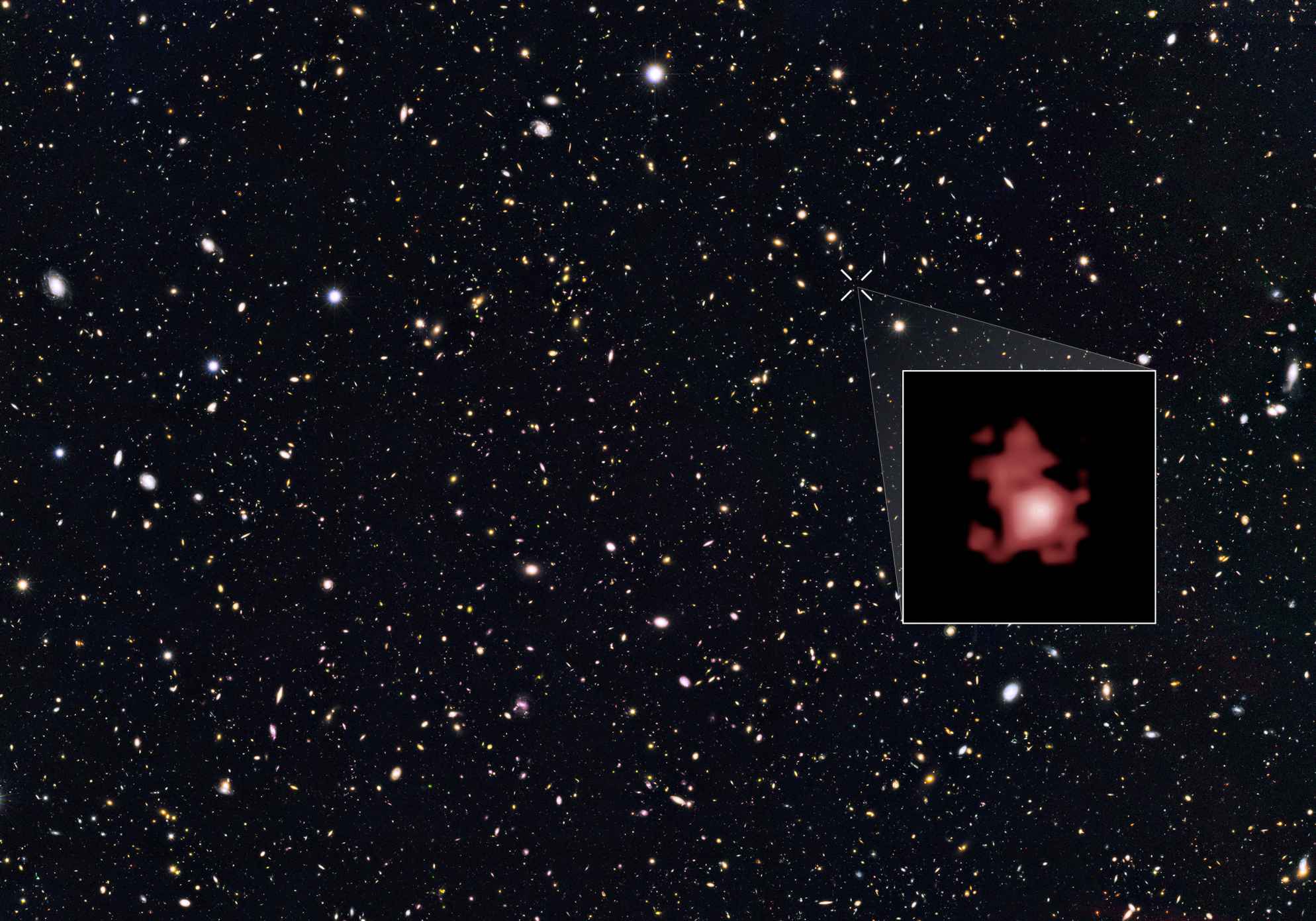Astronomers have established the most distant galaxy and set a record for cosmic distances. This was after researchers used the Hubble Space Telescope at its maximum limit to confirm the existence of the galaxy.
The galaxy is 13.4 billion light-years away and is the most distant and oldest object in the universe. The visible light from the galaxy has started its journey since 400 million years after the Big Bang phenomenon occurred.
Astronomers measure the distance to a galaxy named GN-z11 by separating its light into its color components. As reported by the Daily Mail on Thursday (3/3/2016), because the universe continues to expand, objects that move away from Earth their light stretches to the red end of the spectrum, or known as the red shift phenomenon.
According to scientists, the larger the redshift object is, the more distant it is. Astronomers previously stated that the EGSY8p7 held the red shift record at 8.68, but the GN-z11 beat it by 11.1.
A member of the Yale University team, Dr. Pascal Oesch, said “We have taken a huge step forward in designing, beyond what we could have ever hoped for with the Hubble Telescope.”
“We were able to look back in time to measure the distances of galaxies when the universe was only 3 percent of its present age,” he added.
GN-z11 is believed to be 25 times smaller than the Milky Way Galaxy, but grows and ‘spawns’ new stars 20 times faster than our galaxy.
This discovery has been widely published in the Journal of Astrophysics and raises questions. This arises because according to the latest theory, the cosmic evolution of even galaxies of that size could not have occurred in the final time.
Another author in the journal, Dr. Ivo Labbe, from the University of Leiden in the Netherlands, said “The discovery of GN-z11 shows us that our knowledge of the early universe is still very limited.”
“The process of the formation of GN-z11 is still a mystery to this day,” he added.
Astronomers thought that the Hubble Telescope couldn’t find it before they thought that only the James Webb Telescope could.
“It’s amazing that Hubble can do that,” said Illingworth.
“This latest discovery shows that the Webb Telescope will certainly find many young galaxies…” he added.
Dr. Oesch had no idea that the Hubbel Telescope would be able to find the galaxy. He said, “We’ve taken a huge step back in time, more than we ever thought possible by using Hubble.”
Previously, the team had estimated the distance of GN-z11 with photometric techniques, using filters to measure light at different wavelengths with NASA’s Hubble and Spitzer Telescopes.
This finding becomes an interesting one for further observations using the James Webb Telescope which will be launched into space in 2018.
The discovery also has important ramifications for NASA’s Wide-Field Infrared Survey Telescope (WFRIRST), which will have the ability to find other, more distant galaxies.
Read also: What’s In The Center Of The Galaxy?









